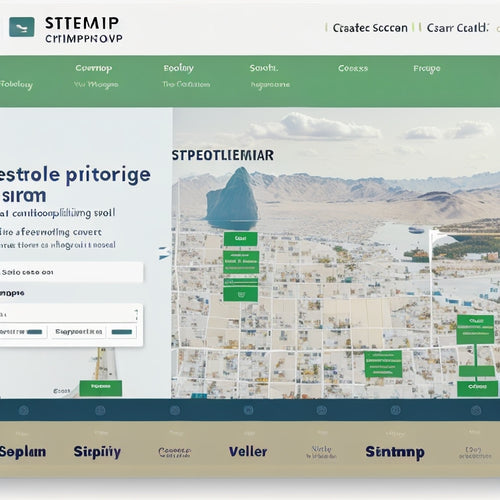
Ecommerce Pain Points: Expert Insights and Solutions
Share
You're probably familiar with the ecommerce pain points that hold your online store back. You struggle to attract new customers, and when you do, converting them into paying customers is tough. Inefficient order fulfillment processes and high cart abandonment rates only add to the frustration. And let's not forget the inventory management headaches and scaling challenges that come with growth. You're not alone - these are common ecommerce pain points that can be addressed with the right strategies and solutions. By tackling these issues head-on, you'll access the growth potential of your online store and take your business to the next level, so let's dive deeper into the solutions that can get you there.
Key Takeaways
• Attracting new customers is a persistent challenge, and driving traffic to ecommerce sites can be difficult, impacting the bottom line.
• Implementing automation solutions, optimizing warehouse layout, and offering multiple shipping carriers can streamline order fulfillment and improve efficiency.
• Optimizing the checkout process, enhancing mobile-friendliness, and providing diverse payment options can reduce cart abandonment rates and improve conversion rates.
• Effective inventory management involves balancing stock levels, prioritizing stock optimization, and utilizing demand forecasting to avoid stockouts and overstocking.
• Scaling an ecommerce business requires operational efficiency, streamlined processes, and strategic resource allocation to accommodate growth and expansion.
Difficulty With Customer Acquisition
Attracting new customers is a persistent challenge, and you're not alone if you're struggling to drive traffic to your ecommerce site and convert visitors into paying customers. You've invested time and resources into creating a great product, but it's not moving off the shelves. It's frustrating, and it's impacting your bottom line.
To overcome this hurdle, you need to focus on customer retention strategies. It's more cost-effective to retain existing customers than to acquire new ones. Analyze your competitors to see what they're doing differently. Identify areas where you can improve and implement changes to stay ahead of the competition.
Optimizing your conversion rate is also essential. Review your website's user experience, simplify the checkout process, and make sure your calls-to-action are clear. Segment your target audience to tailor your marketing efforts and messaging. By doing so, you'll increase the likelihood of converting visitors into paying customers.
Inefficient Order Fulfillment Processes
Once you've successfully acquired and converted customers, the next hurdle is ensuring their orders are fulfilled efficiently, as slow or inaccurate shipping can quickly erode the trust you've built. Inefficient order fulfillment processes can lead to delayed shipments, increased costs, and a negative customer experience. To overcome this pain point, you need to streamline your fulfillment process.
| Challenge | Solution | Benefit |
|---|---|---|
| Manual order processing | Implement automation solutions | Reduce errors and increase efficiency |
| Disorganized warehouse | Optimize warehouse layout and inventory management | Faster order picking and shipping |
| Inadequate shipping options | Offer multiple shipping carriers and rates | Increase customer satisfaction and loyalty |
| Lack of visibility | Implement tracking and monitoring systems | Improve order accuracy and customer communication |
High Cart Abandonment Rates
Your ecommerce store's conversion rates are being stifled by high cart abandonment rates, which can be a frustrating and costly issue to address. You're not alone - according to Baymard Institute, the average cart abandonment rate is around 70%. This means you're losing out on a significant portion of potential revenue. So, what can you do about it?
Start by optimizing your checkout process. Make it seamless, intuitive, and hassle-free. Make sure that your payment options are diverse and convenient, catering to different customer preferences. Consider offering guest checkout, one-click checkout, or even PayPal integration to reduce friction.
Moreover, focus on enhancing the overall user experience. Guarantee that your website is mobile-friendly, loads quickly, and has a clear, easy-to-navigate layout. Implement a progress bar to show customers how far along they're in the checkout process.
Managing Inventory and Stock Levels
Managing inventory and stock levels is a delicate balancing act that can make or break your ecommerce store's profitability. Running out of stock can lead to lost sales and frustrated customers, while overstocking can result in wasteful spending and storage headaches. To avoid these issues, you need to strike the right balance.
To achieve this, you must prioritize stock optimization. This involves identifying slow-moving items, eliminating dead stock, and optimizing your warehouse management. Implementing effective inventory tracking is also pivotal. It enables you to monitor your stock levels in real-time and make informed decisions.
Demand forecasting is another essential tool. It helps you anticipate future sales and adjust your inventory accordingly. By leveraging these strategies, you can avoid stockouts, reduce waste, and increase customer satisfaction. Remember, efficient inventory management is key to maximizing your ecommerce store's profitability, so don't neglect it.
Scaling Business for Growth
As your ecommerce store gains traction, you'll need to scale your business to accommodate increased demand, new markets, and expanded product lines, all while maintaining the efficiency and profitability that got you to this point.
This is where operational efficiency comes in - streamlining processes, automating tasks, and optimizing resources to make sure your business can handle the growth without sacrificing performance.
To achieve this, you'll need to make strategic decisions about how to allocate your resources, including investing in new technology, hiring the right talent, and forming strategic partnerships that can help you expand your reach and capabilities.
This might mean partnering with a logistics provider to enhance shipping times, or collaborating with a marketing agency to develop targeted campaigns.
Cybersecurity and Data Protection
One of the most critical ecommerce pain points you'll face is protecting your customers' sensitive data and your business's digital assets from increasingly sophisticated cyber threats. As an ecommerce business owner, you're responsible for safeguarding sensitive information, such as credit card numbers, addresses, and passwords. A single breach can lead to devastating consequences, including financial losses, reputational damage, and legal liabilities.
To mitigate these risks, consider the following security measures:
-
Implement robust data encryption: Guarantee all sensitive data is encrypted, both in transit and at rest, to prevent unauthorized access.
-
Conduct regular security audits: Identify vulnerabilities and address them before cybercriminals can exploit them.
-
Implement phishing prevention measures: Educate your customers on how to identify and avoid phishing scams, and use email authentication protocols to prevent spoofing.
- Keep software and systems up-to-date: Regularly update your operating system, browser, and plugins to prevent exploitation of known vulnerabilities.
Poor Website Performance Issues
Slow-loading pages and unresponsive interfaces can quickly turn enthusiastic shoppers into frustrated abandoners, making poor website performance a critical ecommerce pain point that requires your immediate attention.
You can't afford to lose sales due to a sluggish website. As an ecommerce entrepreneur, prioritizing website design that guarantees a seamless user experience is crucial.
Optimize your website's loading speed by compressing images, utilizing browser caching, and minimizing HTTP requests. It's vital that your website is mobile-friendly, as most online shoppers access your site through their smartphones.
Streamline your website's code, and consider investing in a content delivery network (CDN) to reduce latency.
Frequently Asked Questions
How Do I Balance Personalization With Customer Data Privacy Concerns?
You balance personalization with customer data privacy concerns by implementing robust data protection measures, ensuring compliance with privacy regulations, and incorporating transparent marketing strategies that prioritize customer experience and trust.
What Is the Ideal Frequency for Sending Promotional Emails?
You're wise to wonder about email frequency; did you know 77% of consumers prefer fewer, more personalized emails? For ideal frequency, segment your list, A/B test, and focus on high customer engagement, boosting open rates and conversions.
Can I Use Social Media Influencers for B2B Ecommerce Marketing?
You can leverage social media influencers for B2B ecommerce marketing by forming strategic influencer partnerships that align with your niche, creating authentic B2B collaborations that drive brand awareness and generate leads.
How Can I Effectively Handle Negative Customer Reviews Online?
"When handling negative reviews, you'll want to respond professionally, addressing concerns promptly and politely. This helps you manage your online reputation, showcasing your commitment to customer satisfaction and turning potential crises into opportunities."
Should I Offer Free Returns to Improve Customer Satisfaction?
"Like Achilles' heel, a restrictive return policy can be your downfall, but offering free returns can be your shield, boosting customer retention and loyalty, ultimately leading to increased profitability, so consider it a worthy investment."
Related Posts
-
How Can I Optimize My Videos for Seo on Shopify?
In today's digital landscape, optimizing videos for SEO on Shopify has become crucial for businesses looking to incr...
-

7 Ways Merchants Can Thrive With Online Courses
You can thrive with online courses by diversifying your revenue streams, building brand authority, and creating a loy...
-

How Do I Create a Sitemap on Shopify
This article provides an informative overview of the process of creating a sitemap on the Shopify platform. The disc...

